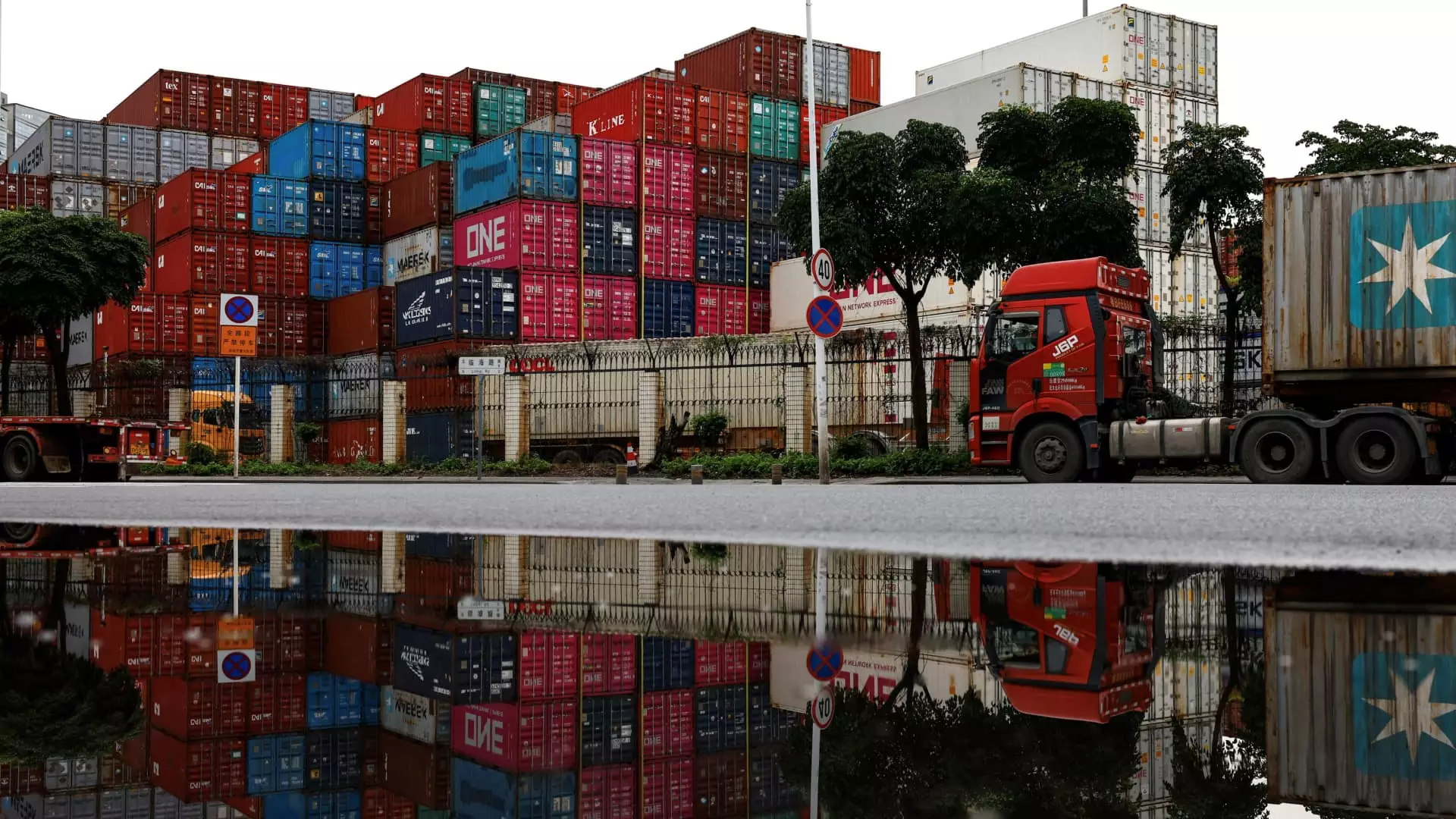China’s manufacturing sector, long the powerhouse of global supply chains, is exhibiting alarming signs of stagnation, with its latest Purchasing Managers’ Index (PMI) indicating a contraction rather than growth. The July figure of 49.3 falls short of expectations and underscores a troubling trend that cannot be dismissed as merely seasonal or weather-related anomalies. Such persistent underperformance hints at structural issues within the economy, raising questions about the resilience of China’s growth model. Instead of signaling a robust economic revival, these numbers reflect a more sobering reality: an economy gradually losing its steam under the weight of internal and external pressures.
The contraction isn’t limited to production alone; employment, new orders, and inventory levels are all declining. These indicators collectively suggest a cooling economy that is not merely suffering from temporary disruptions like heatwaves or heavy rains, but from fundamental deficiencies. The government’s management of these issues appears reactive rather than proactive, with recent measures focusing on subsidies for population increase rather than addressing core economic vulnerabilities. This approach risks prolonging the crisis by avoiding meaningful reforms to stimulate sustainable growth.
Trade Tensions and Geopolitical Strain: The Hidden Toll
Perhaps the most insidious challenge to China’s economic stability is the escalated trade tension with the United States. The revocation of the recent trade truce and the renewal of tariffs threaten to choke off a crucial trade channel. The bilateral tariffs—reaching over 100% at their peak—have already imposed significant costs on manufacturers and exporters. While some production has sought refuge in lower-tariff regions like Vietnam, this is not a sustainable long-term solution. It’s merely a sign of a global economic schism that complicates China’s position as the manufacturing hub of the world.
This fraying relationship isn’t just about tariffs; it reflects a broader strategic contest for economic supremacy. The U.S.’s targeted tariffs on goods from China and retribution measures, such as those imposed on Vietnamese exports, serve as a stark reminder of how geopolitics increasingly defines economic fate. For China, this means a slower transition to higher-value industries, with many companies caught in a wait-and-see game that hampers innovation and productivity.
Furthermore, the lack of clear progress in negotiations signals a dangerous deadlock. With trade talks stalling and no immediate signs of compromise, China faces the risk of economic deceleration becoming entrenched. The world’s second-largest economy might find itself caught in a vicious cycle where trade conflicts lead to decreased investment, which then hampers growth prospects further—a cycle that could be difficult to break without bold policy interventions.
Weather and Policy: Distractions or Root Causes?
Complaints about extreme weather and off-season disruptions have been used by Chinese officials to explain away sluggish economic indicators. While adverse weather conditions—such as the deadly floods near Beijing—certainly disrupt supply chains temporarily, relying on these explanations obscures deeper structural challenges. China’s economy has been grappling with overcapacity issues in various sectors, and the government’s attempts at “anti-involution” measures—aimed at tackling overproduction—are both well-meaning and problematic. These policies, meant to prevent economic overheating, risk stifling growth further if not calibrated carefully.
It’s increasingly evident that China’s growth strategy, centered on heavy industry and export reliance, is approaching its limitations. The recent PMI data paints a picture of declining demand, declining inventories, and cautious businesses. Amidst these conditions, the government appears hesitant to deploy aggressive stimulus or interest rate cuts, perhaps wary of reigniting debt-driven growth. Yet, the absence of substantial support measures may inadvertently deepen the economic malaise, leaving growth reliant on external factors and residual momentum rather than genuine internal strength.
The political emphasis on stability and risk aversion—highlighted during the Politburo meeting—suggests that Beijing prefers to avoid bold interventions that could destabilize the delicate balance it has sought to maintain. However, this cautious stance may only prolong the downturn, leaving the economy vulnerable to external shocks and internal disillusionment.
The Broader Economic Outlook: Fragility Beneath the Surface
Despite some indicators of resilience—like a modest 5.8% rise in exports in June—these figures mask a more complex reality. The second-quarter GDP growth of 5.2% is a slowdown that portends future deceleration. While the numbers superficially appear encouraging, they are largely driven by preemptive order placements and stockpiling ahead of tariff hikes, not genuine organic growth.
The service sector—the engine of modern economies—also shows signs of strain, with the non-manufacturing PMI dipping below the critical 50 mark. This decline signals weaker activity in areas such as tourism, retail, and hospitality, which are vital for job creation and consumer confidence. Without substantial policy support, these sectors could deteriorate further, dragging down overall economic health.
In the grand scheme, China’s economic future hinges on navigating a treacherous landscape filled with trade uncertainties, internal overcapacity, environmental challenges, and demographic shifts. The government’s current approach, characterized by incremental adjustments rather than bold reform, risks leaving the economy vulnerable to a prolonged period of sluggish growth and increased social discontent.
In my view, the Chinese leadership’s reluctance to embrace transformative policies and its reactive stance toward economic threats betray a fundamental misjudgment of the gravity of the situation. For a country so heavily invested in maintaining a facade of stability, this approach could lead to a more pronounced economic downturn—one that might erode the very stability the government seeks to preserve. Only through honest acknowledgment of systemic issues and a willingness to implement comprehensive reforms can China hope to avoid a future where economic fragility spirals into crisis.

